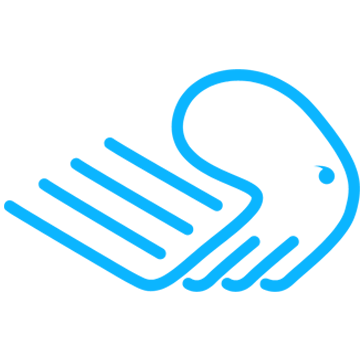
Create Websites with CHEETAH
Global Elements (1)
Global elements" in "Cheetah" are elements such as pop-ups and header and footer areas that are created and designed separately and then later explicitly assigned to web pages. In particular, developing header and footer areas separately and independently from the web pages of a project often represents an enormous reduction in workload - especially when it comes to updates (keyword "navigation menus" in the header area of web pages).
Create header and footer for a website
Web pages usually consist of a header, a main or middle section, and a footer, which usually contains information about the web page owner and links to social media. With "Cheetah" and its "banner" based web page construction principle, it is of course very easy to define appropriate header and footer sections for each web page (maybe save them as a template!).
However, the matter becomes exhausting as soon as you have a complex web project over many web pages, all or most of which have a header with a navigation bar. Whenever the menu bar is added, this addition has to be updated on all web pages that have this menu bar in the header. At the latest here you can see the savings that "Cheetah" offers with the concept of separate, assignable headers and footers. These are, as already mentioned, separately createable headers and footers, which are created individually in the web project in the required number and manner and given a name. Using this name, they can then be explicitly assigned to the corresponding web pages, where they are then displayed either as a header at the top ("Header") or as a footer at the bottom ("Footer"), depending on the type. They are only displayed in preview mode and on the published web page - not in the editor with the corresponding page.
Design head and foot sections
On the project page ("Home") of your web project you will find the entries "Headers" and "Footers" in the left side menu in the section "Global elements" next to "Popups".
These menu items take you back to the "Cheetah" web page editor, but it is now configured so that you can only design either a "Header" or a "Footer". The procedure is intuitive. First you click on the button "CREATE NEW HEADER" (or "FOOTER") and assign a name for it (e.g. "Main Menu Bar 1"). Of course you can also copy an already existing header or footer or change its name afterwards (3-dot menu, selection "Settings"). Afterwards, the "Edit" button will take you to the editing mode as usual, where you can create the corresponding areas. Preconfigured templates can be found in the right margin menu under "Banner" in the areas "Header" and "Footer". Of course, you can start as usual with an empty banner or x-any other template banner, which you then adjust accordingly.
Here, too, a smartphone variant is automatically generated simultaneously, which can of course be adapted optically accordingly. When you are satisfied with the result, save it.
Note: Note that in "Cheetah" it is possible to create a corresponding area also completely separately for the smartphone view, because desktop header (or "Footer") and smartphone header (or "Footer") can be assigned separately by their name - as we will see in a moment.
Assign header and footer areas to the web pages
The assignment is done via the "Settings" point menu of the corresponding individual web page. There you will find the corresponding settings dialog in the "Header Settings" or "Footer Settings" section:
As mentioned above, you can also use different headers or footers for the desktop and mobile versions of the website (or none at all).